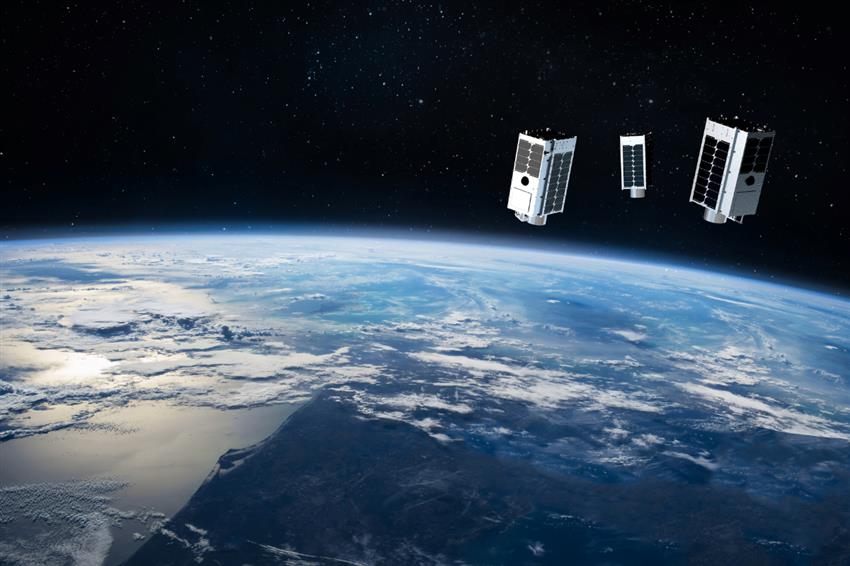Satellites serving a greener planet
When we look up at the sky at night, we can see the stars shining brightly. And, with good eyesight, we might even be able to see satellites. While we go on with our lives on Earth, constellations of satellites are hard at work to provide us with peace of mind and a good quality of life. When we eat a bowl of cereal, watch reality TV, buy things with a bank card, and so much more, it's thanks to satellites.
Satellites are at the heart of many Canadian businesses' activities, such as GHGSat, a high growth SME in the Montreal area (Quebec). Stéphane Germain had his "eureka!" moment in the early 2010s. At that time, Quebec and California had started talking about creating the first carbon market. The environment was the topic of the day; everyone was talking about greenhouse gas (GHG) emissions. This growing global interest in climate change lit a spark within Mr. Germain, who is an entrepreneur at heart.
The early days
From the beginning, Stéphane Germain wanted to use GHGSat to take advantage of market opportunities related to climate change. In a changing economy where businesses were trying to implement measures to reduce their energy consumption and GHG emissions, he turned challenges into business opportunities. Knowing that GHGs made up the main source of global warming, Mr. Germain started thinking about a way to analyze the emissions in order to mitigate their effects. His solution? Have satellites serve a greener planet.
Climate change has several clear consequences like floods, hurricanes, droughts, increasing forest fires, melting glaciers, and rising sea levels. From space, these catastrophes are on full display. Satellite data lets us better understand this planetary phenomenon and propose effective solutions.
Today
Nowadays, GHGSat is known as a pioneer in high-resolution remote sensing from space. The company uses a fleet of nanosatellites to accurately detect industrial methane leaks, even really small ones (methane emissions are one of the easiest GHGs to reduce). Currently, GHGSat is the only company in the world to offer this technology and level of accuracy. Thanks to the emissions data it provides to clients, businesses, governments, regulators, and investors, GHGSat is said to have removed 2.3 megatons of methane from the atmosphere in one year. That's the same as taking 500,000 cars off the road! And they're not stopping there, it aims to remove 50 megatons between now and
Mr. Germain admits that despite business going well today, he had many skeptics when he started out 10 years ago. The Canada Space Agency has been a great support over the years, helping GHGSat develop and improve its technology for commercialization.
The company plans on increasing the size of its constellation to 10 satellites between now and . The six satellites currently in orbit – Claire, Iris, Hugo, Luca, Penny, and Diako – are doing great work for humanity, but for the members of GHGSat, the satellites have a little more meaning: they're the names of their children. Now there's a heartwarming story that is also saving the planet.

